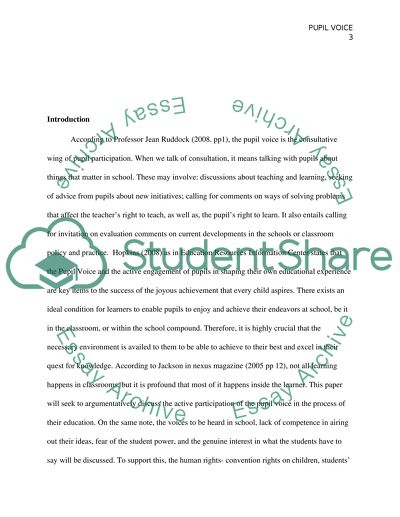Cite this document
(“Pupil Voice in the learning institutions Essay Example | Topics and Well Written Essays - 5000 words”, n.d.)
Retrieved from https://studentshare.org/education/1393296-pupil-voice-in-the-learning-institutions
Retrieved from https://studentshare.org/education/1393296-pupil-voice-in-the-learning-institutions
(Pupil Voice in the Learning Institutions Essay Example | Topics and Well Written Essays - 5000 Words)
https://studentshare.org/education/1393296-pupil-voice-in-the-learning-institutions.
https://studentshare.org/education/1393296-pupil-voice-in-the-learning-institutions.
“Pupil Voice in the Learning Institutions Essay Example | Topics and Well Written Essays - 5000 Words”, n.d. https://studentshare.org/education/1393296-pupil-voice-in-the-learning-institutions.


